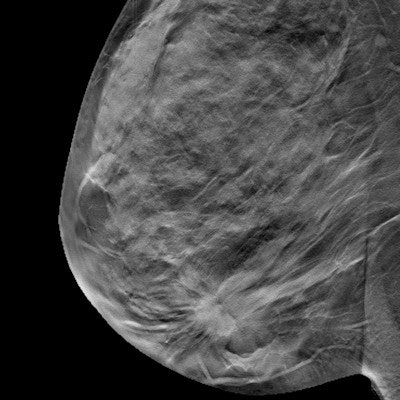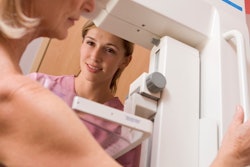
Having access to prior mammography images and comparing them with current digital breast tomosynthesis (DBT) exams reduced recalls by almost 70% in a study published June 29 in the Journal of the American College of Radiology. Comparing current images with priors also cut the digital mammography (DM) recall rate by 56%.
Comparison with prior mammograms has been the standard of care for digital mammography and film-screen mammography, in part because past studies have shown that this comparison reduces false-positive rates and thus recalls, wrote a team led by Dr. Laura Hardesty from the University of Colorado. And although DBT has been shown to be more sensitive and specific than DM, priors are still important for trimming its recall rate.
"Our results demonstrate that comparison with prior mammograms has a similar effect on recall negation for mammograms performed with DBT as it does for mammograms performed with [DM]," the group wrote.
For the study, Hardesty and colleagues reviewed the university's electronic medical record for all nonbaseline screening mammograms performed between December 2012 and December 2013. Women underwent either DBT or regular 2D mammography depending on the location at which they presented for screening; during the study period, 8,875 DBT and 1,093 2D exams were performed.
The group recorded the following:
- Whether DBT had been used
- The BI-RADS category assigned at initial reading
- Whether prior mammograms were available at that initial interpretation
If prior mammograms became available later, the researchers noted the final BI-RADS categories assigned after the prior and the current exam were compared. Those mammograms categorized as BI-RADS 0 at initial reading but recategorized as BI-RADS 1 or 2 after prior exams arrived for comparison were considered recalls negated by the prior mammogram. Then, Hardesty's group compared those recalls negated for mammograms performed with DBT and those performed with 2D mammography.
For the DBT group, 381 patients did not have prior mammograms available, but priors arrived later for 300 of them. For the 2D mammography group, 220 patients didn't have priors available at the time of the exam, but priors arrived later for 181.
Hardesty and colleagues found that prior mammograms eliminated the need for recalls for DBT exams by 68% and for digital mammography exams by 56%; this result was statistically significant (p = 0.01).
The study's findings have important ramifications for clinical practice, according to the researchers. Even though retrieving prior mammograms can be time-consuming and costly, it's worth doing to reduce the recall rate.
"Despite these costs, the reduction in recall rate that occurs when comparison with prior mammograms is performed means comparison with prior mammograms must continue, even with the use of new DBT technology," they concluded. "[Despite] the improvements that DBT offers in the sensitivity and specificity of screening mammography, comparison with prior mammograms remains important for the minimization of recall rates during the use of DBT."



















